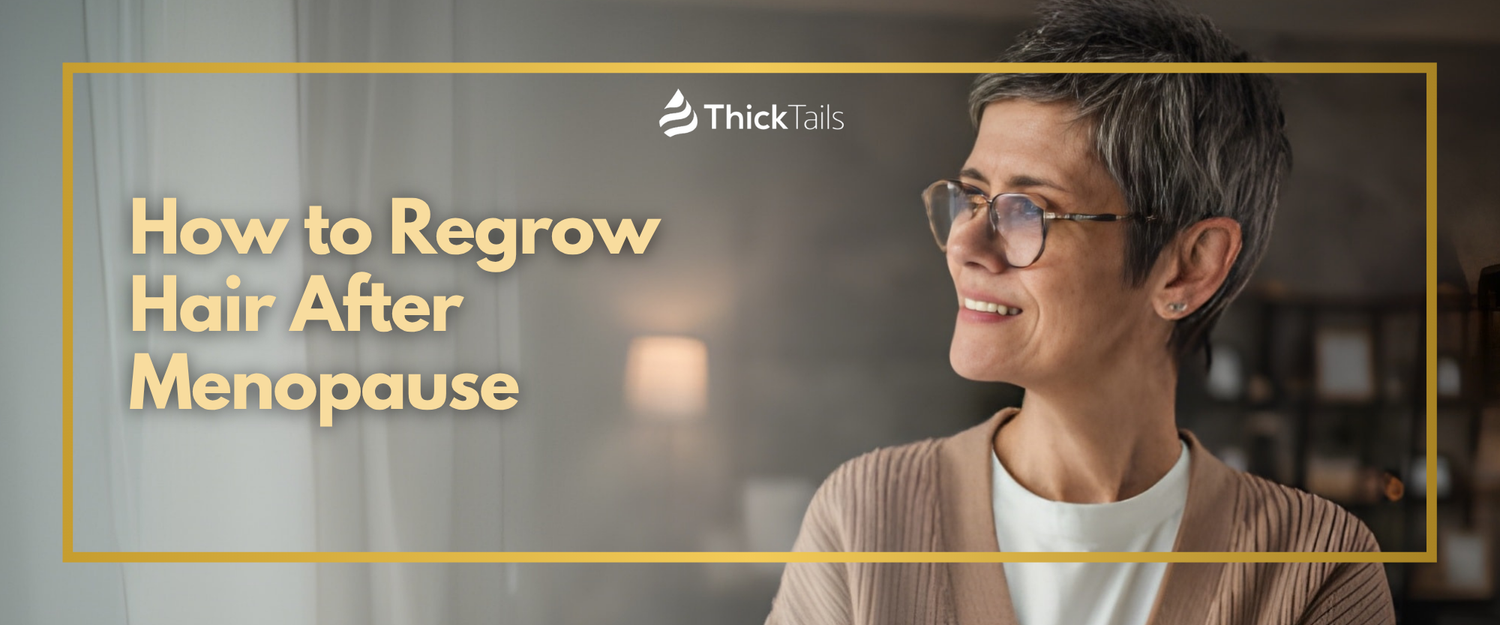Do you feel frustrated and overwhelmed each time you look in the mirror, only to see more hair falling out? Many women with hormonal imbalances like menopause, postpartum recovery, or intense stress can experience varying degrees of thinning hair or sudden hair loss as a result. Fortunately, there are ways to prevent further damage and nourish your locks for healthier-looking tresses. In this blog post, we'll discuss what causes hair loss during periods of dramatic fluctuation in hormones and how you can reclaim control over your scalp health so that you start feeling good about the way your hair looks again.
Understand the types of hair loss and its causes

Hair loss can have several different causes, from health conditions such as alopecia or thyroid disease to lifestyle factors such as stress, diet, and medications. It is important to identify and understand the type of hair loss in order to determine its cause. In androgenic alopecia – which is the most common type of hair loss – the hair follicle gradually shrinks until new hairs cannot be produced. Telogen effluvium is characterized by diffuse thinning throughout the scalp due to excessive shedding of hair. Scarring alopecia either destroys or damages the follicles permanently, leading to permanent baldness with no treatment available other than covering up bald areas with hairpieces or makeup. There are also other rare forms of alopecia that can be caused by autoimmune diseases or other illnesses. Knowing the underlying cause is essential for seeking effective treatments and understanding why it occurs in the first place.
Invest in a good shampoo and conditioner that is suited for your hair type
Keeping your hair healthy is important for maintaining a stylish, sophisticated look. Investing in a good quality shampoo and conditioner that is tailored to your hair type ensures that it will remain strong, shiny, and resilient. There are many different products available on the market, all which have different ingredients designed to suit certain hair types, such as thin or thick, straight or curly. Doing research before purchasing can help you make informed decisions about protecting your hair from damage and unwanted effects. Furthermore, consulting with an experienced stylist can also provide guidance into which products would best suit you and your individual needs. Taking these extra steps will help ensure maximum hair health in order to maintain the look you desire.
Eat a healthy diet with vitamins, minerals and proteins to support your hair growth
Eating healthy is one of the most important aspects in the journey of growing long, lush and nourished hair. A balanced diet rich in vitamins, minerals, and proteins has been shown to have significant effects on hair health if consumed regularly. Vitamins can help strengthen your existing hair while minerals replenish it with much needed elements such as iron that result in faster hair growth! Protein-rich foods like fish, eggs, leafy greens and nuts should also be included for increased blood circulation to stimulate scalp health which further helps promote hair growth. Eating healthy not only helps increase the rate at which your hair grows but also ensures that its texture remains strengthened, shiny and smooth all year round.
Incorporate stress-relieving activities into your lifestyle such as yoga or meditation
Incorporating stress-relieving activities such as yoga or meditation into your lifestyle is an important step in promoting well-being. These activities have been proven to have a positive effect on both physical and mental health, reducing stress levels, improving mood and cognitive performance, and increasing relaxation. Finding a type of activity which suits you best is essential for establishing a successful routine. Yoga can help with flexibility and strength through the physical poses whereas mindfulness meditations allow for increased focus and awareness. Scheduling regular sessions for these activities into your diary ensures that you prioritize your wellbeing amidst a busy lifestyle.
Avoid harsh chemical treatments like bleaching, dyeing or perms
If you're looking to update your hairstyle, it's important to remember that harsh chemical treatments such as bleaching, dyeing, and perming come with the potential for causing permanent damage. These processes can strip away natural oils and weaken strands if not applied carefully. Furthermore, overly harsh chemicals can cause allergic reactions or scalp irritations in some cases, so it pays to be mindful of these risks. It's best to consult a professional stylist who can give you personalized advice on what treatments are most suitable for your hair type and its condition. Ultimately, this type of care helps keep your beautiful locks looking healthy while allowing you to sport the latest look.
Keep a regular trimming schedule to keep split ends at bay

Keeping a regular trimming schedule is the most fool-proof technique for eliminating split ends and maintaining healthy hair. Trimming your locks every six to eight weeks works best, as this allows ample time for split ends to form without becoming overly long or unhealthy. Not only can split ends lead to breakage and damage, but they can also make hairstyles appear limp and lifeless. Adopting a regular trimming schedule helps keep strands strong yet manageable while avoiding ugly split ends. Furthermore, it's important to always use sharp scissors when cutting split ends as dull ones can cause uneven damage instead of an even cut. So next time you’re thinking of rocking that lengthy hairdo, make sure to get regular trims!













